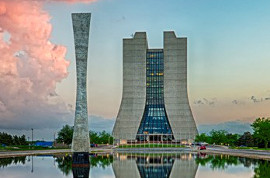Speaker
Dr
Rodrigo Junqueira Leão
(Brazilian Synchrotron Light Laboratory)
Description
Sirius is a synchrotron light source being assembled in Brazil. It will have a 3 GeV electron storage ring and an emittance of 0.25 nm.rad. The alignment tolerances for Sirius is in the order of 0.040 mm between adjacent magnets and 0.080 mm for adjacent girders. Also, the maximum allowed vibration for these components is approximately 0.010 nm, which requires the whole mechanical structure to be very stiff and thus resonate in high frequencies. The slab and foundation of the building also have very special requirements in terms of stability. On the other hand, the flatness of the slab has a targeted tolerance of 20 mm in its whole extension, to accommodate for levelling wedges with only 5 mm range. Not only the machine needs to comply with several challenges, but the building where it will be installed needs to face demanding requirements difficult to achieve for traditional civil construction. Several factors may influence the stability of the slab and radiation shielding over time, such as temperature, vibration, rain levels and so on. This paper will describe monitoring systems being installed on the building, such as a network of hydrostatic levelling sensors on top of the tunnel, and temperature and strain-gages embedded in the concrete. Plans for future installation of seismic and weather stations will be presented, and focus will also be given to the layout of the monitoring systems and the tests already performed.
Primary author
Dr
Rodrigo Junqueira Leão
(Brazilian Synchrotron Light Laboratory)
Co-authors
Mr
Regis Neuenschwander
(Brazilian Synchrotron Light Laboratory)
Mr
Rodrigo de Oliveira Neto
(Brazilian Synchrotron Light Laboratory)
Mr
Sérgio Barreto de Miranda
(Barreto Engenharia e Consultoria Ltda.)
